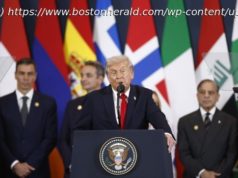One of the most visible parts of North Korea’s nuclear program, the Yongbyon reactor complex is a central point of contention for diplomats trying to resurrect a deal after U. S. President Donald Trump and Kim Jong Un’s Vietnam summit ended without agreement.
HANOI (Reuters) – One of the most visible parts of North Korea’s nuclear program, the Yongbyon reactor complex is a central point of contention for diplomats trying to resurrect a deal after U. S. President Donald Trump and Kim Jong Un’s Vietnam summit ended without agreement.
Buried in low-lying hills about 100 km (60 miles) north of North Korea’s capital, Pyongyang, Yongbyon is home to nuclear reactors, fuel re-processing plants and uranium enrichment facilities.
In a rare press conference held in Hanoi late on Thursday, North Korean foreign ministry officials said they had made a “historically unprecedented offer” to close all of Yongbyon together with U. S. experts.
U. S. negotiators confirmed North Korea had made the offer, but said talks broke down over exactly which facilities were included, and the scope of sanctions relief that Pyongyang demanded in return.
Here are some key facts about Yongbyon, and a summary of what it would mean and take to demolish the complex. WHAT’S THERE?
Built in the late 1950s with Soviet aid, the Yongbyon complex houses at least three reactors which North Korea says are intended to produce electricity.
It also has a fuel fabrication facility and a plutonium reprocessing plant, where weapons-grade materials can be extracted from spent fuel rods, according to the Nuclear Threat Initiative (NTI), a Washington-based think-tank.
A five-megawatt reactor there produces weapons-grade plutonium, a major source of fuel for the nuclear program.
North Korea promised to disable Yongbyon as part of a 2005 disarmament-for-aid deal that emerged from so-called six-party talks, involving the United States, China, Japan, Russia and the two Koreas.
In 2008, the North publicly demolished a cooling tower as an initial step to implement the 2005 accord, but those efforts fell apart after the North barred international inspectors from accessing the facilities. The reactor was reactivated in 2013.
A larger, 50-megawatt reactor was under construction in the 1980s but work was suspended after a 1994 deal with the United States.
Home
United States
USA — mix Explainer: North Korea's Yongbyon nuclear complex takes center stage in stalled talks






